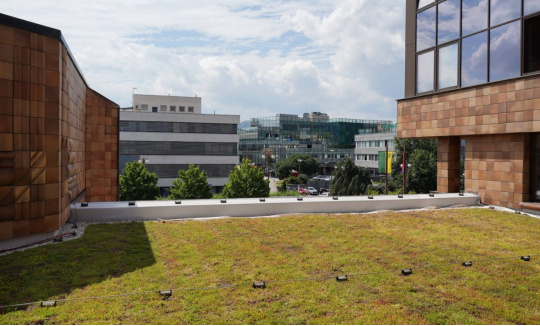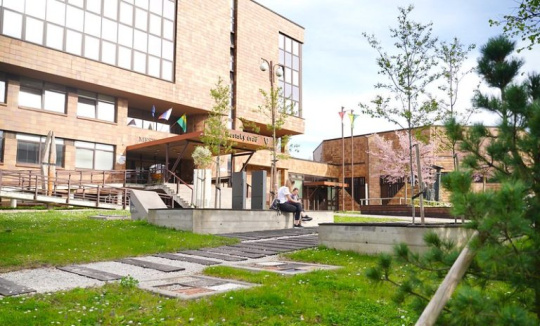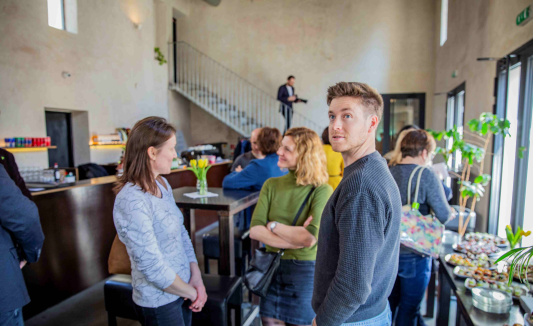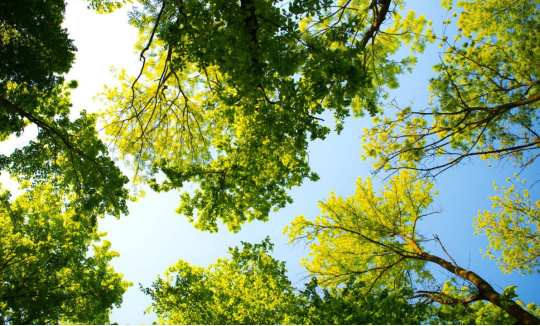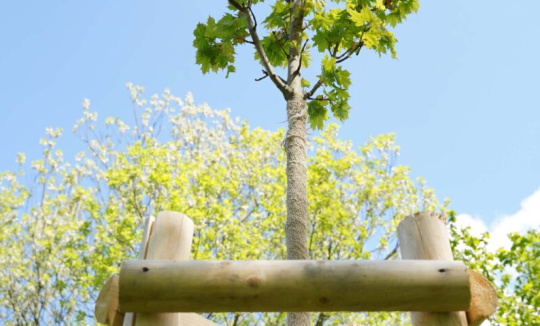THE BUILDING OF THE ŽILINA CITY HALL HAS A NEW GREEN ROOF
The city of Žilina has successfully completed the implementation of a vegetative green roof on the building of the city hall. The local government is responding to climate change with green measures, and one of them is the ecological adaptation of the building. The new roof will help retain moisture and regulate temperature – providing cooling during the summer and preserving warmth in the winter.
The Žilina City Hall building is over 40 years old, and it was necessary for it to meet not only technological but also ecological requirements. Green roofs are among the adaptive measures that make places more resilient. They have a significant impact on retaining water within the city, cooling the climate, and reducing noise in the surrounding environment. In addition to protecting against temperature fluctuations, vegetation layers retain rainwater, thereby reducing the amount of water discharged into the sewer system. "The green roof is the city's response to climate change. We will continue implementing such roofs, including the roofs of the city theater and three primary schools. Adaptation measures are not limited to just this; for a long time, we have been addressing the issue of quality, low-ecological public transportation and building cycling routes. The steps are systematically designed to protect the city as much as possible in light of climate change," said mayor Peter Fiabáne.
The vegetation on the green roof, by retaining water and dust, supports a healthy microclimate, addressing the issue of ventilation in adjacent office spaces with windows oriented towards the roof. "The green roof will not only improve the climate in the city but will also significantly enhance the working conditions for municipal employees because working next to an asphalt roof that generated a lot of heat and dust was not ideal. Now, that will change," added the city's chief architect, Rudolf Chodelka.
Moreover, the implementation of vegetative layers ensures increased fire protection for the building, as this type of roof is classified as non-combustible. The benefits will also be reflected in reduced heating and cooling costs. The green roof project addressed the design of new roofing layers to meet the requirements for thermal resistance according to current standards. Vegetation layers and an extensive growth of drought-resistant plants were laid on top of the top hydro-insulation.
The substrate, together with the plants, protects the roof structure from extreme weather conditions. As part of the construction work, the disassembly and assembly of the lightning conductor, including its inspection, were also carried out. The Žilina municipality installed the vegetative roof thanks to the project "Mitigation and Adaptation to Climate Change in Žilina." The total cost of the roof, which was financially supported by the Norwegian Financial Mechanism and the state budget, amounts to 215,339.60 euros.
 Slovak
Slovak


